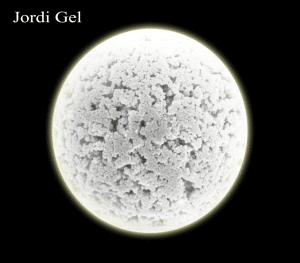
Image Credit: Jordi Labs
Gel permeation chromatography (GPC) is a type of molecular sieving chromatography, where a sample is separated into its constituent parts based on their molecular sizes. This is accomplished by dissolving the sample in a mobile phase (solvent) and passing it through a porous column packing.
Through the stationary phase, the individual components move at different speeds based on how easily they enter different pores, resulting in the separation of the sample in a process which is known as differential partitioning.
For chemical analysis of large molecule species (polymers), size-exclusion chromatography (SEC) is typically utilized. It also encompasses many biochemical applications.
Gel permeation chromatography is the main technique for measuring the molecular weight distributions of complex polymers, and this article will look at the working principles of gel permeation chromatography more closely.
Outlining Gel Permeation Chromatography
In order to carry out gel permeation chromatography, a solvent is first employed to dissolve the sample of interest. Next, the fluid is pumped continuously into an adsorbent bed that is usually made up of porous gel beads packed into a column.
The smaller sample molecules are slower at passing through the porous structure of the column and will take more time to pass through the stationary phase. Yet, a larger sample molecule cannot traverse through comparatively small pores and will pass through the column in less time.
This property is reflective of the individual molecules’ hydrodynamic volumes. The eluted mobile phase molecules can be identified by employing any of the following methods:
- Low Angle Light Scattering (LALS)
- Right Angle Light Scattering (RALS)
- Ultraviolet (UV)
- Evaporative light scattering (ELSD)
- Refractive Index (RI)
- Viscometry
- Fourier Transform Infrared Spectroscopy (FTIR)
Due to the development of a wide range of specially designed porous polymer packings, it is possible to analyze an extremely wide range of molecular weights via gel permeation chromatography columns.
As they are typically retained in the solid porous structure and do not elute from the column, conventional chromatography packings are unsuitable for detecting large molecules.
Finely-tuned porous resins optimize the separating capability of the chromatography columns and may be tailored for enhanced resolution in a specific molecular weight range.
This supplies narrower separation bands for better polymer molecular weight analysis. For establishing the molecular weight of polymer macromolecules, gel permeation chromatography is now one of the standards that is the most widely accepted.
Gel Permeation Chromatography with Jordi Labs
In the field of polymer analysis and molecular weight determination, Jordi Labs is one of the leading analytical experts. Jordi Labs operates a large scope of gel permeation chromatography systems with state-of-the-art detection capabilities and supports almost any combination of stationary phase and mobile phase.

This information has been sourced, reviewed and adapted from materials provided by Jordi Labs.
For more information on this source, please visit Jordi Labs.